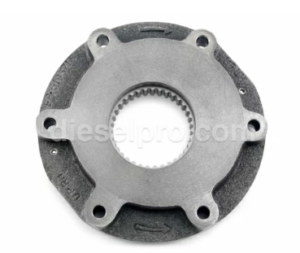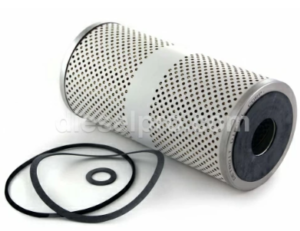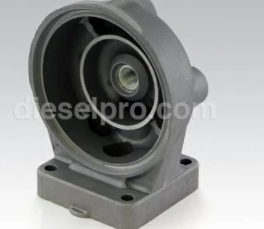
A well-functioning lubrication system is essential for reducing friction, cooling components, and ensuring the longevity of your Detroit Diesel 53 Series engine. This guide provides a comprehensive understanding of the oil pump’s operation, pressure testing procedures, filter replacement intervals, and oil specifications.
Lubrication system & Related Components for Detroit Diesel 353 Non–Turbo Marine & Industrial Engines
Lubrication system & Related Components for Detroit Diesel 353 Turbo Marine & Industrial Engines
Lubrication system & Related Components for Detroit Diesel 453 Non – Turbo Marine & Industrial Engines
Lubrication system & Related Components for Detroit Diesel 453 Turbo Marine & Industrial Engines
Lubrication system & Related Components for Detroit Diesel 6V53 Non – Turbo Marine & Industrial Engines
Lubrication system & Related Components for Detroit Diesel 6V53 Turbo Marine & Industrial Engines
Lubrication system & Related Components for Detroit Diesel 8V53 Non – Turbo Marine & Industrial Engines
Lubrication system & Related Components for Detroit Diesel 8V53 Turbo Marine & Industrial Engines
Oil Pump Operation and Functionality For Detroit Diesel 53 Series Engines (3-53, 4-53, 6V53, 8V53)

The oil pump in Detroit Diesel 53 Series engines is a positive displacement gear pump. Its reliable design ensures that all moving parts receive consistent lubrication under varying operating conditions.
Components of the Oil Pump
- Pump Gears:
- The pump uses meshed gears to draw oil from the sump and deliver it under pressure to the engine’s lubrication system.
- The tight tolerances between the gear teeth ensure a steady flow of oil without pulsation.
- Pump Housing:
- The housing encloses the gears and directs oil flow to the outlet port.
- Precision machining prevents oil leakage and maintains pump efficiency.
- Pressure Relief Valve:
- This valve maintains safe oil pressure by diverting excess oil back to the sump when the pressure exceeds the specified limit (typically 65–70 psi).
- It prevents damage to the lubrication system caused by high pressure.
- Oil Pickup Tube and Screen:
- Located at the base of the oil sump, the pickup tube ensures that the pump draws oil efficiently, while the screen filters out large debris.
- Located at the base of the oil sump, the pickup tube ensures that the pump draws oil efficiently, while the screen filters out large debris.
How the Oil Pump Operates
- Oil Flow Path:
- Oil is drawn from the sump through the pickup screen.
- The pump pressurizes the oil and delivers it to the main oil gallery.
- From the gallery, oil is distributed to key engine components: crankshaft, camshaft, connecting rods, and valve train.
- Cooling and Lubrication:
- The pump ensures a continuous flow of oil to reduce friction and dissipate heat from moving parts.
- Overflow oil lubricates the valve stems and cam followers, draining back to the sump.
- Pressure Regulation:
- The pressure relief valve opens if pressure exceeds the recommended limit, safeguarding seals and gaskets from failure.
- The pressure relief valve opens if pressure exceeds the recommended limit, safeguarding seals and gaskets from failure.
Oil Pressure Testing for Consistent Lubrication For Detroit Diesel 53 Series Engines (3-53, 4-53, 6V53, 8V53)

Regular oil pressure testing ensures the oil pump and lubrication system are functioning optimally, preventing wear and potential engine failure.
Testing Procedure
- Preparation:
- Warm up the engine to its operating temperature (160–200°F).
- Ensure the oil level is at the recommended level on the dipstick.
- Connect the Pressure Gauge:
- Locate the oil pressure test port on the engine’s main oil gallery.
- Attach a calibrated oil pressure gauge securely to the port.
- Measure Pressure at Various Speeds:
- At Idle: The pressure should range between 10–15 psi.
- At Rated Speed (Full Throttle): The pressure should range between 50–70 psi.
- Troubleshooting Low Pressure:
- Inspect the oil pump for worn or damaged gears.
- Check for clogged oil passages, a dirty filter, or an incorrect oil level.
- Inspect the pressure relief valve for wear or improper seating.
- Pressure Relief Valve Testing:
- Remove the valve and inspect for spring tension and seat integrity.
- Replace the valve if it fails to maintain proper pressure.
Filter Replacement Intervals and Procedures For Detroit Diesel 53 Series Engines (3-53, 4-53, 6V53, 8V53)

The oil filter plays a crucial role in trapping contaminants that can cause wear to engine components. Regular replacement ensures the lubrication system operates at peak efficiency.
Replacement Intervals
- Standard Maintenance:
- Replace the oil filter every 100–250 hours of engine operation, depending on usage and environmental conditions.
- In heavy-duty or dusty environments, consider more frequent replacements.
- Seasonal Checks:
- Perform an oil and filter change before and after prolonged storage to prevent corrosion or oil degradation.
- Perform an oil and filter change before and after prolonged storage to prevent corrosion or oil degradation.
Oil Filter Replacement Procedure

- Drain the Oil:
- Run the engine briefly to warm the oil, making it easier to drain.
- Shut off the engine and remove the drain plug to empty the sump.
- Remove the Old Filter:
- Unscrew the oil filter using a filter wrench.
- Inspect the filter for debris or metal particles, which may indicate internal engine wear.
- Prepare the New Filter:
- Apply a thin film of clean engine oil to the rubber gasket on the new filter.
- This ensures a proper seal and prevents leaks.
- Install the New Filter:
- Screw the filter into place by hand until the gasket contacts the base.
- Tighten the filter an additional ¾ turn using the filter wrench.
- Refill the Oil:
- Reinstall the drain plug and fill the engine with the recommended oil (refer to oil specifications below).
- Check the oil level and top off if necessary.
- Check for Leaks:
- Start the engine and observe the filter area for leaks.
- Recheck the oil level after the engine runs for a few minutes.
Oil Specifications For Detroit Diesel 53 Series Engines (3-53, 4-53, 6V53, 8V53)
Using the correct oil is critical for optimal engine performance and protection. Detroit Diesel 53 Series engines require specific oils that meet stringent standards.
Recommended Oil Types
- API Classification:
- Use high-quality detergent diesel engine oil meeting API service category CF-2 or higher.
- Oils with enhanced additive packages reduce deposit formation and wear.
- Viscosity Grades:
- Choose the oil viscosity based on ambient temperatures:
- SAE 15W-40: Recommended for most climates.
- SAE 30: Suitable for warmer conditions.
- SAE 10W: Ideal for cold climates.
- Choose the oil viscosity based on ambient temperatures:
Oil Capacity by Engine Model
| Engine Model | Oil Capacity (Gallons) |
| 3-53 | 2.5 |
| 4-53 | 3.5 |
| 6V53 | 6.0 |
| 8V53 | 8.0 |
Key Points on Oil Maintenance
- Always maintain the oil level between the “add” and “full” marks on the dipstick.
- Check oil levels regularly, especially during heavy usage.
- Use fresh oil for every oil change, and avoid mixing oil brands or types.
Common Issues and Troubleshooting
- Low Oil Pressure:
- Possible Causes: Worn oil pump gears, a clogged filter, or low oil levels.
- Solution: Replace the filter, inspect the oil pump, and ensure the sump is filled.
- Oil Contamination:
- Possible Causes: Fuel or coolant leaks, or prolonged use without an oil change.
- Solution: Identify and repair leaks, and perform an oil and filter change.
- Excessive Oil Consumption:
- Possible Causes: Worn piston rings or valve seals.
- Solution: Inspect engine components and replace worn parts as needed.
By following these detailed procedures for oil pump operation, pressure testing, and filter replacement, you can ensure the lubrication system in your Detroit Diesel 53 Series engine performs reliably. Routine maintenance minimizes wear, prevents costly repairs, and maximizes engine life.
Lubrication system & Related Components for Detroit Diesel 353 Non–Turbo Marine & Industrial Engines
Lubrication system & Related Components for Detroit Diesel 353 Turbo Marine & Industrial Engines
Lubrication system & Related Components for Detroit Diesel 453 Non – Turbo Marine & Industrial Engines
Lubrication system & Related Components for Detroit Diesel 453 Turbo Marine & Industrial Engines
Lubrication system & Related Components for Detroit Diesel 6V53 Non – Turbo Marine & Industrial Engines
Lubrication system & Related Components for Detroit Diesel 6V53 Turbo Marine & Industrial Engines
Lubrication system & Related Components for Detroit Diesel 8V53 Non – Turbo Marine & Industrial Engines
Lubrication system & Related Components for Detroit Diesel 8V53 Turbo Marine & Industrial Engines



 Free US Calls: 1-888-433-4735
Free US Calls: 1-888-433-4735 International: 305-545-5588
International: 305-545-5588